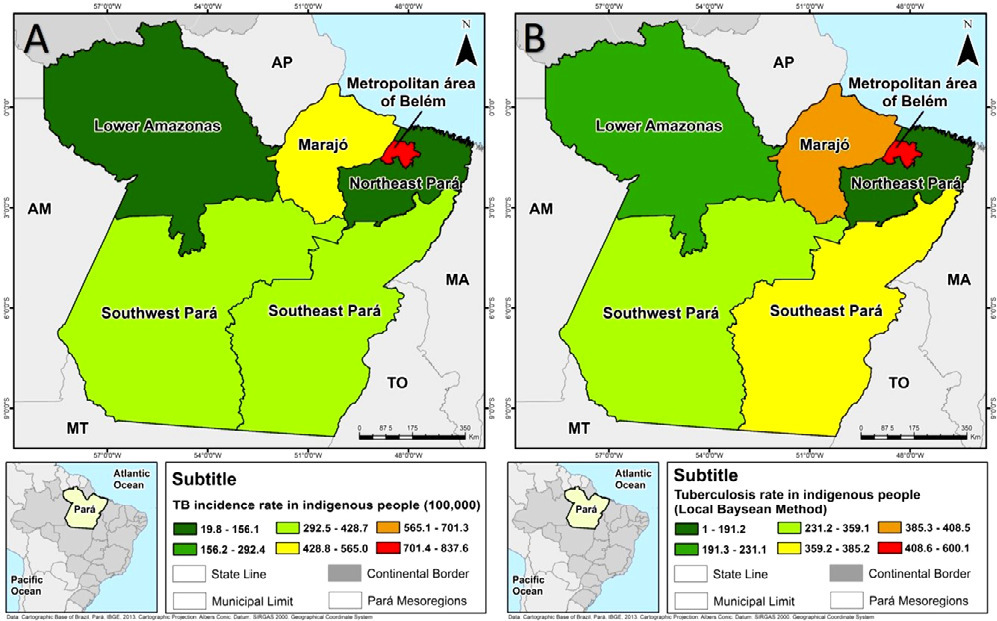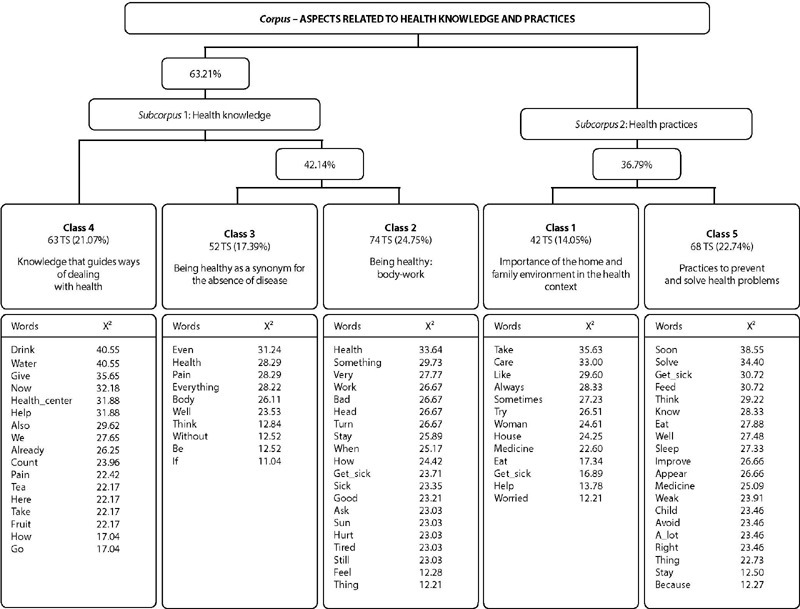-
RESEARCH01-01-2018
Adherence of hypertension patients in the Brazil’s Family Health Strategy
Revista Brasileira de Enfermagem. 2018;71(3):1030-1037
Abstract
RESEARCHAdherence of hypertension patients in the Brazil’s Family Health Strategy
Revista Brasileira de Enfermagem. 2018;71(3):1030-1037
DOI 10.1590/0034-7167-2017-0297
Views0See moreABSTRACT
Objective:
to evaluate the adherence and associate it to blood pressure control and to follow-up observation of people with hypertension in the Brazil’s Family Health Strategy.
Method:
cross-sectional study, conducted with 417 people in treatment of hypertension, living in a municipality located in the Northwest region of the state of Paraná, Brazil. The data were collected in the first 2016 semester, using an instrument adapted and validated for the evaluation of satisfaction with the services offered by Primary Health Care. Analysis of variance and the logistic regression model were used for the treatment of variables.
Results:
it was evidenced that people with inadequate follow-up observation evaluate the relations between professional/user and the guidance to the medications used as unsatisfactory.
Conclusion:
weak guidelines and ineffective dialogue between health professionals and users might result in an inadequate follow-up observation of blood pressure control and of people with hypertension.
-
RESEARCH01-01-2018
Prevalence and factors associated with experience of intrafamilial violence by teenagers in school
Revista Brasileira de Enfermagem. 2018;71(3):1022-1029
Abstract
RESEARCHPrevalence and factors associated with experience of intrafamilial violence by teenagers in school
Revista Brasileira de Enfermagem. 2018;71(3):1022-1029
DOI 10.1590/0034-7167-2016-0546
Views0See moreABSTRACT
Objective:
To estimate prevalence of intrafamilial violence experience and its association with sociodemographic, sexual and use of alcohol/drugs variables in teenagers of a public school in Salvador, Bahia, Brazil.
Method:
Cross-sectional study with 239 teenagers. Data were collected through structured instrument, analyzed according to descriptive and inferential statistics, with multiple logistic regression.
Results:
Research pointed out a high prevalence of intrafamilial violence among teenagers (60.67%). Experience of this grievance was associated, with statistical significance, with the variables: higher age range (PR = 1.83 and 95%CI: 1.05 – 3.18) and regular use of condom (PR = 1.81 and 95%CI: 1.06 – 3.08). Violence was also associated with consumption of alcohol and marijuana.
Conclusion:
Regular use of condom and consumption of alcohol and/or marijuana represent risk behaviors to the experience of intrafamilial violence by teenagers in school, especially older than 15 years old.
-
RESEARCH01-01-2018
Persistent metabolic syndrome and risk of cardiovascular disease in children and adolescents
Revista Brasileira de Enfermagem. 2018;71(3):1013-1021
Abstract
RESEARCHPersistent metabolic syndrome and risk of cardiovascular disease in children and adolescents
Revista Brasileira de Enfermagem. 2018;71(3):1013-1021
DOI 10.1590/0034-7167-2016-0564
Views0See moreABSTRACT
Objective:
to verify persistence of metabolic syndrome (MetS) and components in overweight children and adolescents, as well as its relation to socioeconomic and demographic characteristics and to the Pathobiological Determinants of Atherosclerosis in Youth (PDAY) score.
Method:
a two-point longitudinal study: at enrollment and after a 24-month interval, with 133 individuals ages from two to 18 years. The demographic anthropomorphic and blood variables were evaluated. Analysis was carried out by simple and paired association tests, as well as multiple logistic regression.
Results:
persistent MetS was observed in 38.3% of the sample, associated cardiovascular risk (ACR) in 79.7%, reduction in arterial pressure and do HDL-c. After adjusting for age and sex, excess weight (ExpB: 0.182; CI: 0.059-0.561), low HDL-c (ExpB: 9.247; CI: 1.157-73.930) and high LDL-c (ExpB:1.915; CI: 0.921-3.979) were associated with persistent MetS.
Conclusion:
persistent MetS was associated with obesity, HDL-c and LDL-c, but not with the PDAY score.
-
01-01-2018
Nutritional status and factors associated with non-institutionalized people over 75 years of age
Revista Brasileira de Enfermagem. 2018;71(3):1007-1012
Abstract
Nutritional status and factors associated with non-institutionalized people over 75 years of age
Revista Brasileira de Enfermagem. 2018;71(3):1007-1012
DOI 10.1590/0034-7167-2017-0207
Views0See moreABSTRACT
Objective:
to determine the factors related to the risk of malnutrition in a non-institutionalized population over 75 years of age.
Method:
a cross-sectional study was conducted using a questionnaire in a sample of 326 individuals over 75 years of age in Castellón (Spain), during 2015, and selected through intentional sampling.
Results:
Malnutrition prevalence was 2.8%. 26.9% of the individuals were at risk of malnutrition, whereas women presented a higher rate (31.5%). Women with a good overall health status showed a lower rate than men, 55% and 69%, respectively. Individuals that showed a lower risk of malnutrition are those with a positive perception than those who have a good overall health. Frail elderly people showed a higher risk of malnutrition (57.5%) compared to non-frail subjects (20.2%) p< 0.001.
Conclusion:
Frail women, self-assessed health, overall health, and use of health care services (nursing consultation) were related to a higher risk of malnutrition.
-
01-01-2018
Estado nutricional y factores asociados en mayores de 75 años no institucionalizados
Revista Brasileira de Enfermagem. 2018;71(3):1007-1012
Abstract
Estado nutricional y factores asociados en mayores de 75 años no institucionalizados
Revista Brasileira de Enfermagem. 2018;71(3):1007-1012
DOI 10.1590/0034-7167-2017-0207
Views1See moreRESUMEN
Objetivo:
determinar los factores relacionados con el riesgo de desnutrición en la población de mayores de 75años no institucionalizada.
Método:
estudio transversal realizado mediante cuestionario en una muestra de 326 individuos mayores de 75 en Castellón (España), durante 2015. Seleccionados mediante muestreo intencionado.
Resultados:
Prevalencia de desnutrición 2,8%. El 26,9% de los individuos están en riesgo de desnutrición, las mujeres lo presentan en mayor proporción (31,5%). Las mujeres presentan una salud general buena en menor proporción que los hombres, el 55% frente a 69%. Tienen menor riesgo de desnutrición los individuos que tienen una percepción positiva y los que tienen una buena salud general. Los mayores frágiles presentan un mayor riesgo de desnutrición (57,5%) frente a los no frágiles (20,2%) p< 0.001.
Conclusión:
Se relacionan con mayor riesgo de desnutrición, mujeres fragilidad, percepción de la salud, salud global y utilización de Servicios sanitarios (consulta de la enfermería).
-
RESEARCH01-01-2018
Empowerment of the mothers of children in a pediatric intensive care unit
Revista Brasileira de Enfermagem. 2018;71(3):998-1006
Abstract
RESEARCHEmpowerment of the mothers of children in a pediatric intensive care unit
Revista Brasileira de Enfermagem. 2018;71(3):998-1006
DOI 10.1590/0034-7167-2016-0689
Views0See moreABSTRACT
Objective:
to analyze the process of empowerment of the mothers of children hospitalized in a pediatric intensive care unit (PICU) according to Cheryl H. Gibson’s framework.
Method:
a qualitative study with a non-directive interview in groups was carried out with 14 mothers in the PICU of a pediatric teaching hospital in the state of Rio de Janeiro, whose data were submitted to thematic analysis.
Results:
all mothers underwent at least one phase of the process of empowerment. Some of them achieved the phase of participatory competence in the care for their children, being heard by the team and expressing their needs, opinions, and questions.
Final considerations:
attentive listening and information sharing with mothers is necessary, in order to provide essential support so that they undergo the process of empowerment, thus involving themselves in care and decision-making regarding their children.
-
RESEARCH01-01-2018
Translation and adaptation of a questionnaire on the needs of postpartum adolescents
Revista Brasileira de Enfermagem. 2018;71(3):992-997
Abstract
RESEARCHTranslation and adaptation of a questionnaire on the needs of postpartum adolescents
Revista Brasileira de Enfermagem. 2018;71(3):992-997
DOI 10.1590/0034-7167-2017-0021
Views0See moreABSTRACT
Objective:
Describe the processes of translation to the Portuguese language and cultural adaptation of the Postpartum Learning Needs (PLN) to the Portuguese context.
Method:
Methodological study of an instrument that was constructed and validated in Jordan. Here are presented the procedures referring to linguistic, semantic and cultural validation, involving the stages of translation from English to European Portuguese, synthesis of translations, back-translation to the original language, expert committee, and pre-testing.
Results:
In the translation process, some vocabulary variations were solved through consensus among translators. The expert committee found that the version translated to Portuguese presented semantic, idiomatic, cultural and conceptual equivalence, while needing some adjustments. Pre-testing was applied to 45 adolescent mothers, of whom 86.6% considered the items comprehensible.
Conclusion:
Semantic, idiomatic, cultural and conceptual equivalences were conceptually satisfactory among questionnaire versions, which is relevant for the Portuguese culture and easily understandable. It is crucial to assess the psychometric properties of the questionnaire so its adapted version can be made available.
-
RESEARCH01-01-2018
Cross-cultural adaptation of the instrument Readiness for Hospital Discharge Scale – Adult Form
Revista Brasileira de Enfermagem. 2018;71(3):983-991
Abstract
RESEARCHCross-cultural adaptation of the instrument Readiness for Hospital Discharge Scale – Adult Form
Revista Brasileira de Enfermagem. 2018;71(3):983-991
DOI 10.1590/0034-7167-2017-0241
Views0See moreABSTRACT
Objective:
to perform the cross-cultural adaptation of the Readiness for Hospital Discharge Scale – (RHDS) Adult Form for use in Brazil.
Method:
a methodological study was conducted in 2015, in Brazil’s federal capital, following the eight stages scientifically established.
Results:
analysis proved the maintenance of semantic, idiomatic, cultural, and conceptual equivalences and kept both the face and content validity of the original version. The judging committee and the pre-test participants declared they understood the RHDS items and answer scale.
Conclusion:
the instrument is culturally adapted for Brazil and can be used as one of the stages for planning hospital discharge.
Search
Search in:
Nuvem de Tags
Enfermagem (930)Cuidados de Enfermagem (269)Atenção Primária à Saúde (239)Idoso (208)Educação em Enfermagem (151)Segurança do Paciente (150)Saúde Mental (145)Educação em Saúde (139)Estudos de Validação (131)Qualidade de Vida (104)Tecnologia Educacional (100)Promoção da Saúde (99)COVID-19 (91)Criança (91)Família (87)Enfermagem Pediátrica (86)Saúde do Trabalhador (86)Adolescente (85)Saúde Pública (82)Estudantes de Enfermagem (77)





